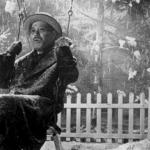When you think back on the life of Mother Teresa, the first words that come to mind might be “Saint of Calcutta’s Slums” or “Caregiver to the Poorest of the Poor,” but, I suspect, that your first association with Mother Teresa is not “Chief Executive Officer” or “CEO.” Nevertheless, Ruma Bose and Lou Faust, in their recent book Mother Teresa, CEO: Unexpected Principles for Practical Leadership mount a case for us to consider what lessons we may be able to learn by viewing Mother Teresa’s life through the lens of a twenty-first century corporate administrator.
 Perhaps most obviously, Mother Teresa — now technically the “Blessed Teresa of Calcutta” following her 2003 posthumous beatification by Pope John Paul II (a step on the way toward her likely eventual canonization and official sainthood in the Roman Catholic Church) — was a “CEO” in the sense that she did run a worldwide Roman Catholic religious order: the “Missionaries of Charity,” which she founded in 1948. The authors provocatively (and correctly!) note that this organization, founded by a lowly Albanian nun “conducts operations in over one hundred countries; has a loyal full-time workforce of four thousand; has over one million volunteer team members; is one of the most recognized brands in the world; and has raised and deployed billions of dollars in capital” (ix). In total, Bose and Faust extrapolate eight leadership principals that can be culled from Mother Teresa’s leadership style, but I have been tasked in this book review to concentrate on the eighth and final principle: “Use the Power of Silence.”
Perhaps most obviously, Mother Teresa — now technically the “Blessed Teresa of Calcutta” following her 2003 posthumous beatification by Pope John Paul II (a step on the way toward her likely eventual canonization and official sainthood in the Roman Catholic Church) — was a “CEO” in the sense that she did run a worldwide Roman Catholic religious order: the “Missionaries of Charity,” which she founded in 1948. The authors provocatively (and correctly!) note that this organization, founded by a lowly Albanian nun “conducts operations in over one hundred countries; has a loyal full-time workforce of four thousand; has over one million volunteer team members; is one of the most recognized brands in the world; and has raised and deployed billions of dollars in capital” (ix). In total, Bose and Faust extrapolate eight leadership principals that can be culled from Mother Teresa’s leadership style, but I have been tasked in this book review to concentrate on the eighth and final principle: “Use the Power of Silence.”
As I read this final chapter, I was reminded of a quote from the Philokalia, a Christian spiritual classic in the Eastern Orthodox tradition, in which Saint Hesychios wrote that, “If you wish to engage in spiritual warfare, let that little animal, the spider, always be your example for stillness of heart; otherwise you will not be as still in your intellect as you should be. If during your struggle you are as still in your soul as is the spider, you will be blessed by the Holy Spirit” (166). Perhaps envisioning Mother Teresa as a spider is counterintuitive, but is this image any more counterintuitive than picturing Mother Teresa — of the humble white and blue sari — as a corporate suit? The invitation of this book is to consider the ways that these counterintuitive angles can allow us to see in ways to which we had previously been blind. Indeed, both spiders and CEOs can be notoriously calculating and blood-thirsty — but just as CEOs at their best can be ethical and inspiring leaders, spiders can reveal to us how patience, stillness, and silence can result in achieving our desired goals. The spider stays strategically still until the the best possible point to make its move. Similarly the efficacious power of silence in Mother Teresa’s life allowed her to hear God’s voice (instead of her own voice or the voice of the world) at a few pivotal, life-altering points — resulting in life-choices that counterintuitively garnered the world’s attention to her small acts of loving-kindness to the least among us. Likewise, the life-changing voice that can paradoxically ‘speak from inner silence’ is precisely the point of the author’s final chapter. (Of course, I must in the same breath qualify that Mother Teresa’s relationship with silence was decidedly complex and complicated.)
Importantly for authenticity, the authors attest to the power of silence, not only in Mother Teresa’s life, but also in their own lives for “quieting in the mind . . . to recognize that many of the answers I need lie within me” (96-7). In a world that too often tells individuals to question their self-worth, to constantly re-evaluate their best judgment, and to always be looking to keep up with their neighbor, silence for Mother Teresa and for us can be a powerful tool for learning to trust your inner voice, your inner judgment, and your inner teacher. In this final chapter, the authors point toward what may be the scariest, riskiest, and ultimately most powerful lessons we can learn from “Mother Teresa, CEO”: as the Psalmist wrote in Psalm 46:10, “Be Still and Know that I Am God.”












